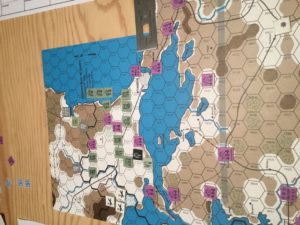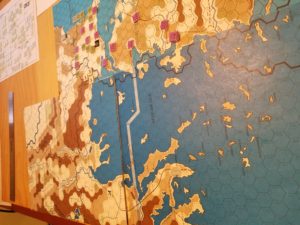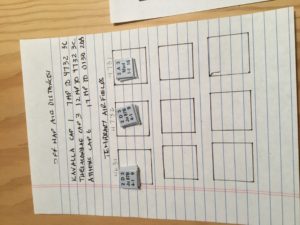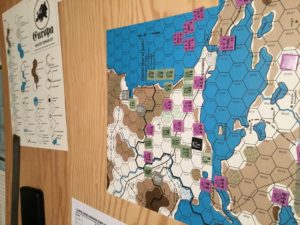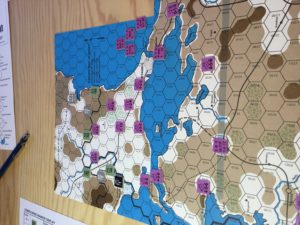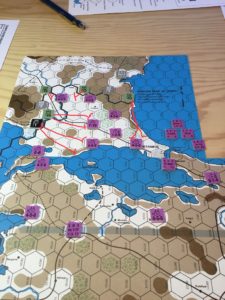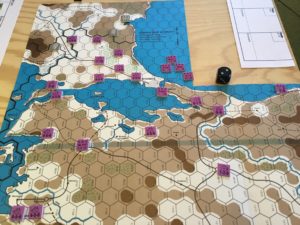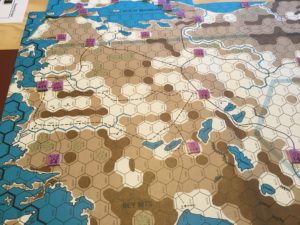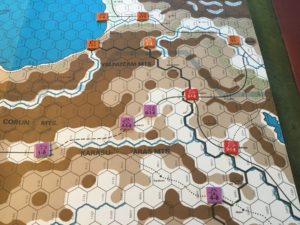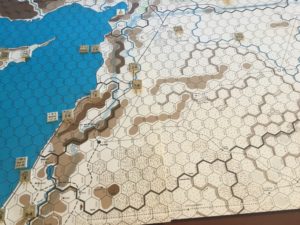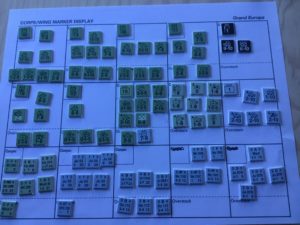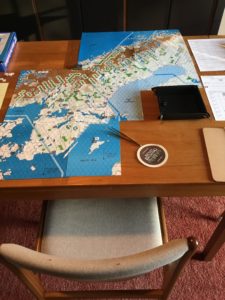Seemed simple enough, but I went three iterations calculating basic ground combat odds, air support/escort allocation and air combat. Ugly. The final outcomes are disjointedly summarized below.
Hex 4825 – The 11th Armored Division attacked a lone artillery unit. The basic 5:1 odds were accompanied by an AECA of +3. Axis air support included 2 ME-110s flying escort for a DO-17 bomber and Mixed Attack Squadron. Both Turkish interceptors managed to penetrate the screen, but could not shoot down any bombers. The revised odds were 7:1, +3 to the die roll. The artillery unit was eliminated.
This attack set up the possibility of a ZOC kill for the attack on Hex 4727.
Hex 4727 – Axis 46th and 11th Corps with 54 total factors. Their AECA was 1/3 or a -1 die modifier. The Turks had an armored division and cavalry division with a total of 11 strength points. Their AECD was over 1/2 or a +2 modifier. The basic odds were 54:11 or 4:1, with a net +1 die modifier. Three JU-87s along with ME-109 and Me-110 escorts were assigned to the ground support mission. The Turks responded by flying their P-40 squadron on an intercept mission. The P-40 bypassed both escorts and shot down one JU-87. The final odds were 62:11, or 5:1, -1 die modifier. The die roll was a 4, -1 or 3, for a defender retreat result. The cavalry unit was eliminated during the retreat, and the armored division cadred.
Hex 4429 – The 18th Mountain Corps and 52nd Corps attacked with 35 factors, supported by two squadrons of He-111s and a Ju-88A1 squadron. The hex was guarded by an infanty division and border guards. The resulting odds were 42:7 or 6:1. The Axis rolled an exchange(!!!). The Turkish infantry division was cadred and then eliminated during retreat. The border unit was eliminated. The Axis cadred a winterized infantry division.
Hex 4924 – The 40th and 40 corps, with 45 strength points and an AECA of +3, attacked a Turkish division supported by an A-19 squadron. The final odds were 45:7, or 6:1 with a +3 die modifier. The Turkish division was eliminated.
